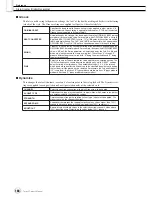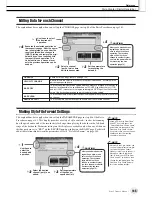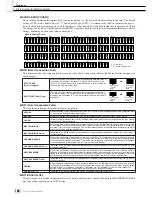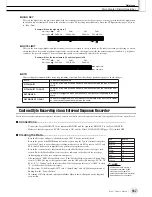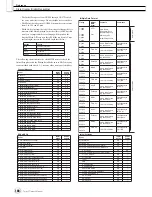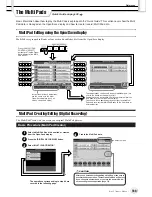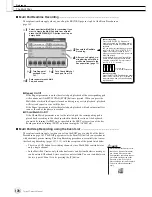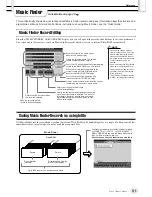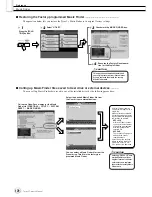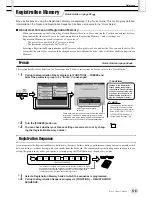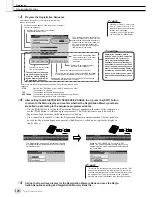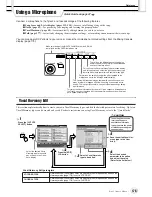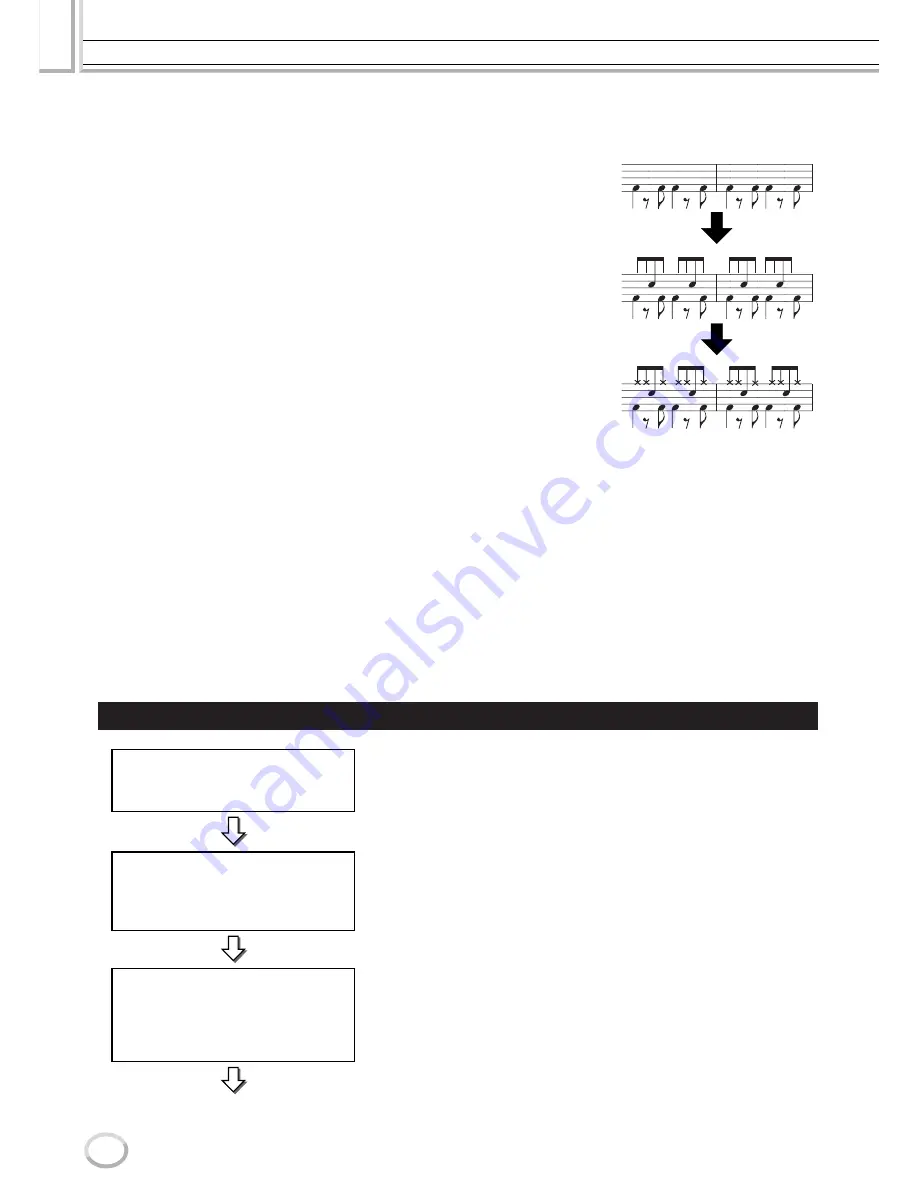
Style Creator (Digital Recording)
Reference
160
Tyros2 Owner’s Manual
●
Loop Recording and Overdub Recording
The Song Creator (Song Recording) feature records your keyboard performance as MIDI data. Recording a style data via the Style
Creator, however, is done in a different way. Here are some of the aspects in which style recording differs from song recording:
• Loop Recording ................ Style playback repeats the rhythm patterns of
several measures in a “loop,” and style record-
ing is also done using loops. For example, if you
start recording with a two-measure main sec-
tion, the two measures are repeatedly recorded.
Notes that you record will play back from the
next repetition (loop), letting you record while
hearing previously recorded material.
• Overdub Recording .......... This method records new material to a part
(channel) already containing recorded data,
without deleting the original data. In style
recording, the recorded data is not deleted,
except when using functions such as Rhythm
Clear (page 162) and Delete function (page
161). For example, if you start recording with a
two-measure MAIN section, the two measures
are repeated many times. Notes that you record
will play back from the next repetition, letting
you overdub new material to the loop while
hearing previously recorded material.
Using the recording methods above, the Style Creator feature lets you record complete rhythm patterns (like the one above) quickly
and easily.
●
Rhythm Parts and Pitched Parts
Creating or recording the Rhythm parts (containing non-pitched data) differs from recording other parts (containing pitched data)
in the following ways.
• Note data can be overdubbed to existing Rhythm parts of a preset style, whereas other pitched parts can be newly recorded
to only after all existing preset data on the part is deleted.
• Style parts (channels) other than Rhythm parts are played back according to the chord root/type specified in the chord section
of the keyboard. The notes output from style parts (channels) other than Rhythm parts are transposed from the Source Pattern
(described below) according to the chord root/type specified in the chord section of the keyboard. The Style Creator lets you
set the parameters that determine how the note is transposed and set the parameters that determine how notes held through
chord changes will be handled.
The Style File Format (SFF) combines all of Yamaha’s auto accompaniment
(style playback) know-how into a single unified format. By using the Style
Creator, you can take advantage of the power of the SFF format and freely
create your own styles.
The chart shown at left indicates the process by which the style is played back.
(This does not apply to the rhythm track.) These parameters can be set via the
Style Creator feature.
●
Source Pattern
................................................................... page 166
There are a variety of possibilities for style playback notes, depending on the par-
ticular root note and chord type that are selected. The style data is appropriately
converted depending on the chord changes you make during your performance. This
basic style data that you create with the Style Creator is referred to as the “Source
Pattern.”
●
Note Transposition
............................................................ page 166
This parameter group features two parameters that determine how the notes of the
Source Pattern are to be converted in response to chord changes.
●
Other Settings
................................................................... page 167
Using the parameters of this group, you can fine-tune how style playback responds
to the chords you play. For example, the Note Limit parameter allows you to have
the voices of the style sound as realistic as possible by shifting the pitch to an
authentic range—ensuring that no notes sound outside the natural range of the
actual instrument (e.g., very low notes of a piccolo sound).
Bass Drum
Snare Drum
Bass Drum
Snare Drum
Hi-Hat
Bass Drum
Special Parameter Settings based on Style File Format
Source Pattern
PLAY ROOT
(Chord Root setting of a Source Pattern)
PLAY CHORD
(Chord Type setting of a Source Pattern)
Note Transposition
NTR
(Note Transposition Rule applied to the Chord Root
change)
NTT
(Note Transposition Table applied to the Chord Type
change)
Other Settings
HIGH KEY
(Upper limit of the octaves of the note transposing caused
by the Chord Root change)
NOTE LIMIT (Note range in which the note is sounded)
RTR
(Retrigger Rule that determines how notes held through
chord changes will be handled)
Chord change via the
chord section of the
keybaord.
Output
Summary of Contents for 2
Page 1: ...Owner s Manual EN ...
Page 236: ...Tyros2 Owner s Manual ...



















